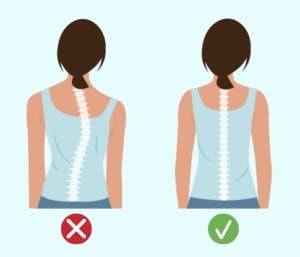
Maintaining good posture is not just about looking poised and confident; it actually plays a crucial role in your overall health and well-being. When you sit or stand with proper posture, you are helping to align your spine correctly, which can prevent issues like back pain, muscle strain, and even headaches. Poor posture, on the other hand, can lead to a range of health problems, including digestive issues, circulation problems, and even decreased lung capacity. So, next time you catch yourself slouching, remember that your posture is more than just a matter of appearances – it’s a key component of your physical health. Improving posture is a common goal addressed through physical therapy exercises. Proper posture can help prevent musculoskeletal issues, reduce pain, and enhance overall well-being.
When It Starts Affecting Your Health
Recognizing when your posture is affecting your health involves paying attention to physical cues and being mindful of how you feel. Everybody is different, but there are some common signs to look out for that alert that something is wrong.
Notice if you are slouching or hunching over, and make a conscious effort to sit or stand up straight. Remember to take breaks to stretch and move around to prevent stiffness and discomfort. Regular self-assessment and awareness of your body’s alignment, coupled with seeking professional advice if symptoms persist, can help you identify and address posture-related health concerns.
Be Sure to Watch out for:
- Persistent back or neck pain
- Discomfort in the shoulders
- Headaches
- Fatigue
- Changes in body alignment (e.g., rounding shoulders, increased spinal curvature)
- Stiffness and reduced flexibility
- Difficulty maintaining a neutral spine position
- Numbness or tingling in extremities
- Changes in breathing patterns
Exercises and Stretches for Good Posture
Here are 7 physical therapy exercises that can contribute to improved posture:
 1. Chest Extension Exercise:
1. Chest Extension Exercise:
– Sit or stand with your back straight.
– Place your hands behind your hips, elbows pointing outward.
– Gently arch your upper back backward, focusing on the mid-back region.
– Hold for a few seconds and return to the starting position.
– Repeat for 10-15 repetitions.
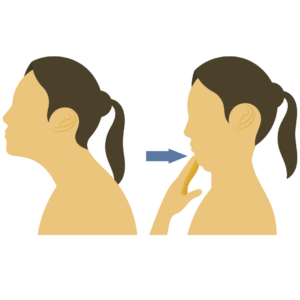 2. Chin Tucks:
2. Chin Tucks:
– Sit or stand with a straight spine.
– Slowly tuck your chin to your chest, keeping your back straight.
– Hold for a few seconds and then return to the neutral position.
– Repeat for 10-15 repetitions.
 3. Scapular Retraction:
3. Scapular Retraction:
– Sit or stand with your arms at your sides.
– Squeeze your shoulder blades together without shrugging your shoulders.
– Hold for a few seconds and then release.
– Repeat for 10-15 repetitions.
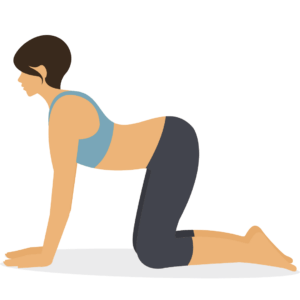 4. Cat-Cow Stretch:
4. Cat-Cow Stretch:
– Here’s a classic back stretch. Start on your hands and knees in a tabletop position.
– Inhale as you arch your back, dropping your belly towards the floor (Cow position).
– Exhale as you round your back, tucking your chin to your chest (Cat position).
– Repeat for 10-15 repetitions.
 5. Wall Angels:
5. Wall Angels:
– Stand with your back against a wall and your feet a few inches away.
– Raise your arms to shoulder height and bend your elbows.
– Slowly slide your arms up the wall, maintaining contact with the wall.
– Return to the starting position and repeat for 10-15 repetitions.
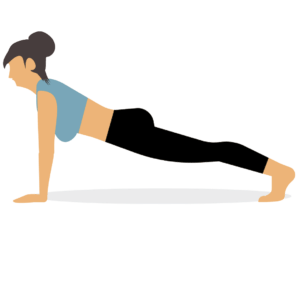 6. Plank with Proper Alignment:
6. Plank with Proper Alignment:
– Get into a plank position with your hands directly beneath your shoulders.
– Keep your body in a straight line from head to heels.
– Engage your core and hold the position for 20-30 seconds.
– Gradually increase the duration as you get stronger.
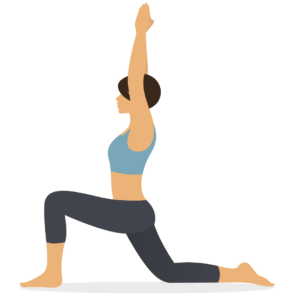 7. Hip Flexor Stretch:
7. Hip Flexor Stretch:
– Kneel on your right knee with your left foot in front, forming a 90-degree angle.
– Shift your weight forward, feeling a stretch in the front of your right hip.
– Hold for 20-30 seconds and switch sides.
It’s essential to consult with a healthcare professional, like a physical therapist, before starting any new exercise routine, they can provide personalized advice based on your specific needs and help monitor your progress. This is especially true if you have pre-existing medical conditions or concerns. Sign up for a free 10-min consultation with FPPT today your body will thank you for the extra care and attention you give it!





